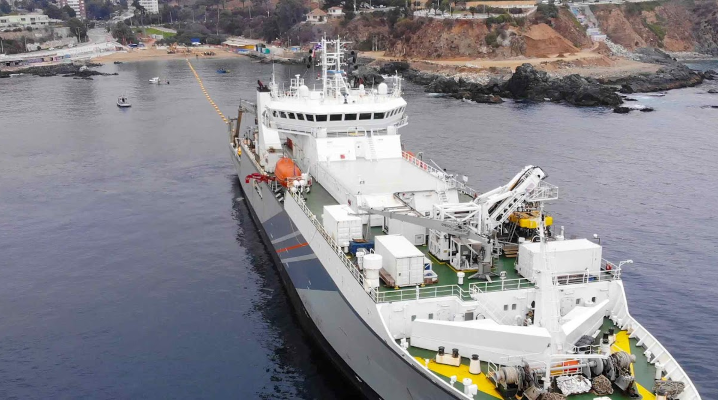 CLOUD
CLOUD
 CLOUD
CLOUD
 CLOUD
CLOUD
Google LLC’s latest subsea networking project is set to see the company deploy a new internet cable that will run from the East Coast of the United States to Las Toninas, Argentina with additional landings in Brazil and Uruguay.
The search giant detailed the project today in a blog post. The internet cable is named Firmina after Brazilian abolitionist and author Maria Firmina dos Reis.
Google and fellow tech giants such as Facebook Inc. have driven much of the worldwide investment in subsea internet infrastructure over recent years. They sometimes build the cables together with other companies to share the costs, which can run in the hundreds of millions of dollars. Despite the steep price tag, at the scale the likes of Google operates, building a new cable can be more cost-efficient than leasing bandwidth on the cable of a telecommunications company.
A subsea internet cable comprises multiple high-speed fiber optic links, known as fiber pairs, that are deployed in a protective casing to shield them from the ocean outside. Data zips through the cable in the form of light pulses. The light pulses weaken over time as they travel through the fiber pairs, which is why subsea cables have systems called repeaters every 60 or so miles that amplify the signal.
Google has invested significant resources in making the signal amplification process more efficient. Through the effort, the search giant found a way to simplify the design of the repeaters inside its internet cables by implementing an approach known as space-division multiplexing. Normally, for each fiber pair in a cable, the repeaters require two amplification lasers to help boost the signal. Space-division multiplexing reduces that number to four lasers for every four fiber pairs.
Google’s Firmina cable will also feature a new networking innovation. The company says the cable will include a specialized electricity supply system built to improve operational reliability.
An internet cable draws electricity from power sources deployed at one of its two ends and at the so-called landing stations where it branches off to other locations. If one of the power sources malfunctions, the repeaters responsible for amplifying data signals traveling through the cable can experience outages. Google’s system will reduce the risk of such outages.
“Firmina will be the longest cable in the world capable of running entirely from a single power source at one end of the cable if its other power source(s) become temporarily unavailable — a resilience boost at a time when reliable connectivity is more important than ever,” explained Bikash Koley, the vice president of global networking at Google Cloud. “Achieving this record-breaking, highly-resilient design is accomplished by supplying the cable with a voltage 20% higher than with previous systems.”
Koley added that “with 12 fiber pairs, the cable will carry traffic quickly and securely between North and South America, giving users fast, low-latency access to Google products such as Search, Gmail and YouTube, as well as Google Cloud services.”
Google now has investments in a total of 16 subsea internet cables worldwide. Besides providing the search giant with more network capacity in the regions where they’re located, the optical links can potentially also help it indirectly gain access to additional bandwidth elsewhere. It’s believed that companies such as Google sometimes swap capacity on their cables with capacity on other companies’ cables based on their network requirements.
Another major player in the undersea internet ecosystem is Facebook, which announced plans for two new cables of its own just a few months ago. One of the projects is a collaboration with Google. Like the search giant, Facebook has been researching new approaches to make its cables more efficient, including an experimental technique that aims to boost bandwidth by using aluminum instead of copper to carry electricity to key components.
Support our mission to keep content open and free by engaging with theCUBE community. Join theCUBE’s Alumni Trust Network, where technology leaders connect, share intelligence and create opportunities.
Founded by tech visionaries John Furrier and Dave Vellante, SiliconANGLE Media has built a dynamic ecosystem of industry-leading digital media brands that reach 15+ million elite tech professionals. Our new proprietary theCUBE AI Video Cloud is breaking ground in audience interaction, leveraging theCUBEai.com neural network to help technology companies make data-driven decisions and stay at the forefront of industry conversations.